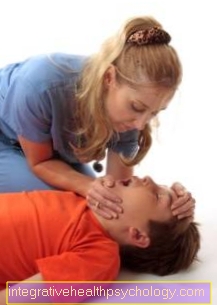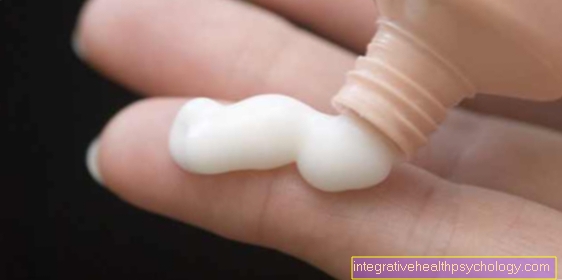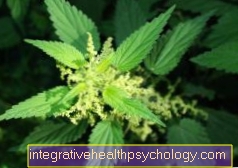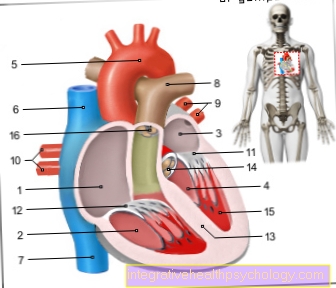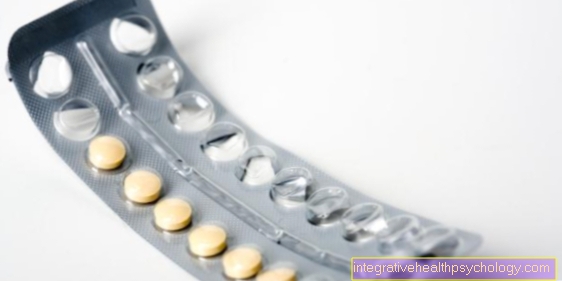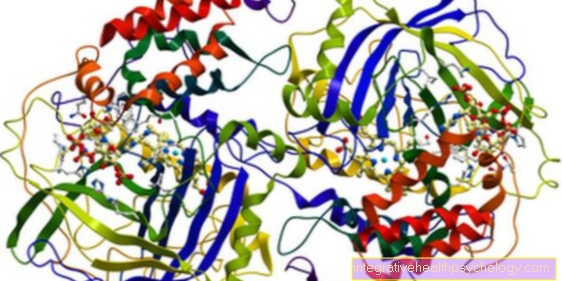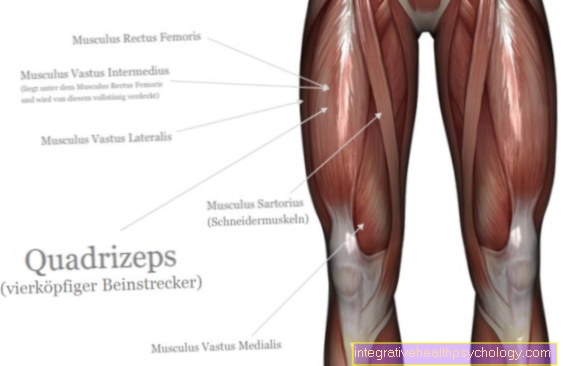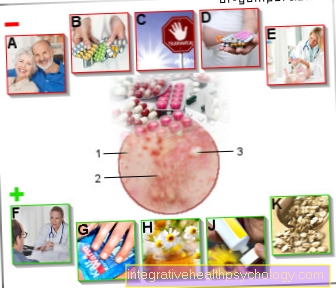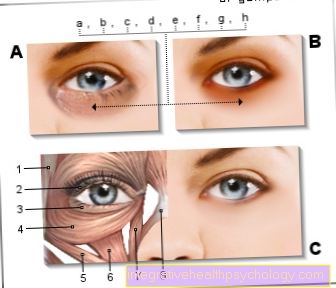Tannolact
introduction
Tannolact preparations are anti-inflammatory and anti-itchy products that can be applied topically to the skin. They are available in various forms (cream, fat cream, bath additive, lotions). These are mainly used in inflammatory skin diseases (Eczema), which are often manifested by severe redness and accompanying burning sensation or itching. Tannolact products are particularly effective against inflammation in the anal and genital areas and on skin folds, where the skin is inflamed by constant rubbing. In addition, Tannolact can also be used in babies and young children to prevent a sore baby's bottom.

Indication for Tannolact
Tannolact can be used in various inflammatory skin diseases (Eczema) can be used in children and adults. As a rule, the superficial layers of the skin are particularly affected. Typically, the skin is very reddened, which can also be accompanied by burning or itching. In the case of weeping inflammation, Tannolact can support wound healing. Among other things, Tannolact is therefore also suitable for the symptomatic treatment of neurodermatitis and skin infections due to bacteria or fungi.
A common indication for the use of Tannolact is a sore baby's bottom. In babies, this often results in a simple inflammation in the area of the diaper, which can develop into diaper rash due to an infection with bacteria or fungi. Regular use of Tannolact can counteract the development of diaper rash.
Read more about this under Diaper rash
Finally, Tannolact can also be used for supportive wound treatment and wound care. In addition, regular use can reduce perspiration on the skin.
Active ingredient and effect
The various products from Tannolact all contain the same active ingredient, Tamol PP (Phenol-methanal-urea-polycondensate). This is one synthetically produced tanning agent. Tannins are naturally occurring substances that, in low doses, have an anti-inflammatory, antipruritic and wound healing effect.
The anti-inflammatory and itch-relieving effect is due to the formation of a kind of protective film in the area of the epidermis. This protects the skin from further damage by irritating substances or pathogens and allows it to heal. An additional drying, contracting (astringent) and has a slight hemostatic effect, Tannolact can also be used on open and weeping wounds. It inhibits further oozing of the wound and thereby supports wound healing in the affected skin area. Finally, the use of Tannolact leads to a reduction in pain and itching.
side effect
Side effects from treatment with Tannolact products are rare. One of the reasons for this is that the active ingredients and ingredients only appear externally (topical) and therefore do not get into the body's bloodstream. For this reason, side effects mainly occur in the area of the skin where the preparation has been applied.
In rare cases, skin allergic reactions occur. The body reacts to different ingredients in the cream. This can lead to reddening, itching or a slight burning of the skin.
Further skin irritations are also possible. The use of Tannolact in the eye area is particularly dangerous. Contact with the eyes causes severe irritation and inflammation in the eye area. Vigorous rinsing of the eyes for at least 10 minutes and the consultation of an ophthalmologist is urgently required in this case.
If any side effects occur, Tannolact products should first be discontinued for safety reasons and a doctor should be consulted.
application
The use of Tannolact differs depending on the dosage form (cream, bath additive, lotion).
The Tannolact (fat) cream should be applied thinly to the affected skin area three times a day. It should be used until the inflammation of the skin has subsided.
Tannolact lotions should be applied thinly once or twice a day. They are particularly suitable for the prevention of diaper rash and can therefore also be used with every diaper change.
Tannolact bath products can be used in many different ways. Both full baths, hip baths and partial baths are possible. The amount of bath additive can be found on the package insert, depending on the type of bath.
Alternatively, the bath additives can also be used for poultices and compresses. These can be applied to the inflamed areas of the skin two to three times a day.
Use in the genital area
In the genital area in particular, the skin is often permanently reddened and inflamed. This usually becomes symptomatic with severe itching. This inflammation is continuously increased by the constant friction of the skin folds or by clothing. There is also the risk of infection of the inflamed skin, as there are numerous naturally occurring germs in the genital area. Regular use of Tannolact fat cream can counteract this. By applying it three times a day, the epidermis is strengthened, a protective film is formed and at the same time itching, burning and pain is alleviated.
Read more about this under Eczema in the genital area
Use on hemorrhoids
Tannolact can also be used for inflammation and open wounds in the course of a hemorrhoidal disease. Hemorrhoids are arterial cavernous bodies in the area of the anus, which, together with the muscles, seal the end of the intestine. A variety of causes can lead to an expansion and proliferation of these vessels with the appearance of severe itching, pain during bowel movements and blood in the stool.
This inflammatory reaction can be alleviated with the help of Tannolact. In addition to using a cream, the bath additives from Tannolact are particularly suitable. This means that it is effective in areas of the body that are difficult to reach (skin folds).
Read more about this under How to successfully treat hemorrhoids
Use for an anal fissure
An anal fissure is a painful, elongated tear in the skin in the anal area. This usually manifests itself as a stabbing painful stimulus during bowel movements. Treatment with creams and stool-regulating measures can be used, especially in the case of the lighter forms of an anal fissure. Tannolact is suitable for this because of its anti-inflammatory, anti-itching and pain-relieving effects. At the same time, the wound healing can be supported by applying the cream. For more severe forms of an anal fissure, additional medication and numbing ointments are required.
Read more about this under Anal fissure
preparations
Bath additive
Tannolact bath additive is particularly suitable for use in skin inflammation in hard-to-reach areas of the body. These include body folds as well as the anal and genital regions. Depending on the affected skin area and skin symptoms, different applications of the bath additive are available (full bath, partial bath, hip bath, compresses).
A hip bath with Tannolact bath additives is particularly recommended for inflammatory skin diseases in the anal and genital areas. It is also recommended to postpartum mothers. Approximately one sachet (10g Tannolact bath additive) and 25 liters of water are used per bath. A bath with Tannolact bath products should not take longer than 10 to 15 minutes. It is recommended to use it two to three times a week. However, it should be ensured that a hip bath with Tannolact bath products is taken a maximum of once a day.
The bath additives are also popular with toddlers and babies. The development of diaper rash in an inflamed and sore baby bottom can be counteracted.
Lotio
Tannolact Lotio (suspension) is also used in connection with numerous inflammatory skin diseases. In addition to the active ingredient Tamol PP, it also contains zinc oxide. These also support wound healing and have a cooling effect on the affected skin area. For this reason, Tannolact Lotio is often used on a sore baby bottom to prevent infection.
Can be used during pregnancy and breastfeeding
The various products from Tannolact can also be used during pregnancy and breastfeeding. The active ingredients and ingredients get through the external (topical) Do not use in the mother's bloodstream and therefore do not have any effect on the baby's development. So far, no side effects or incidents in pregnant women or breastfeeding mothers are known. Nevertheless, especially during pregnancy, the use of all medication should be discussed with the attending physician.
Read more about this under Medication during pregnancy


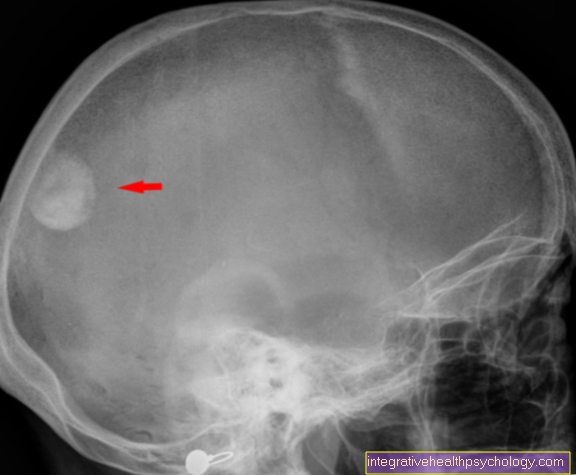
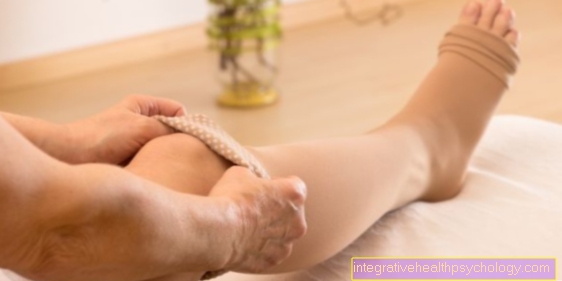


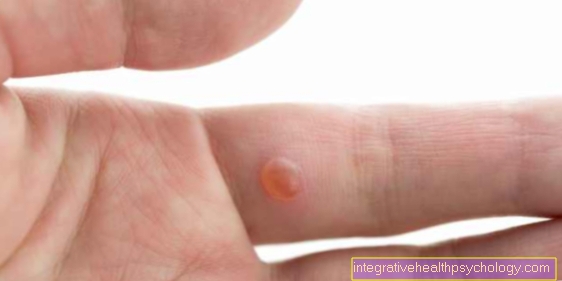
.jpg)
